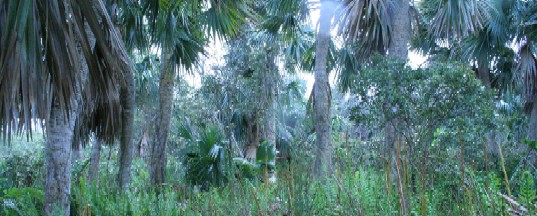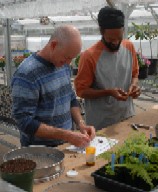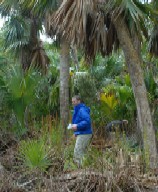UK Overseas Territories
- Home
- UK
Overseas Territories
- Biodiversity
- Threats
- Kew's historical links
- Ascension
- Anguilla
- Bermuda
- British Antarctic Territory
- British Indian Ocean Territory
- British Virgin Islands
- Cayman Islands
- Falkland Islands
- Gibraltar
- Montserrat
- Pitcairn Islands
- South Georgia
- Sovereign Base Areas on Cyprus
- St Helena
- Tristan da Cunha
- Turks and Caicos Islands
- Conservation activities
- Capacity Building
- Community involvement
- Links
- Contacts
UK Overseas Territories Programme
Bermuda: Kew Connections |
Activities in territory |
|
Bermuda's threatened native plants |
|
|
A member of Kew's UKOTs team and a seed collector from the Millennium Seed Bank joined a workshop in Bermuda set up to consider the plight of the island chain's threatened native plants. The workshop focussed on the 19 higher plants (flowering plants and conifers) and ferns that are listed under Bermuda's Protected Species Act. Native plants across the archipelago are faced with an onslaught of invasive plant species and pests and their natural habitats are being cleared for building land. During the workshop the Kew staff provided training for Bermudan botanists and conservationists in gathering data in the field and horticultural propagation techniques. Also, as part of the workshop, DNA and seed collecting programmes were established. Seeds were collected from yellow wood (Zanthoxylum flavum), Bermuda fan palm (Sabal bermudiana) and Bermuda olivewood (Cassine laneana) for storage at the Millennium Seed Bank. Members of the workshop also collected DNA samples from 21 plant species as well as plant material for herbarium specimens (as reference for plant identification and naming). |
|
Community involvement |
While attending the workshop, the Kew staff gave a public lecture on plant recovery in Bermuda and were interviewed for an article in the newspaper Bermuda Sun. |
Capacity building |
| Kew is active in building capacity for conservation within the UK Overseas Territories. Four Bermudians have taken part in Kew’s training programme, attending the International Diploma in Botanic Garden Management, the International Diploma in Botanic Garden Education, the Darwin Initiative funded course on the Cultivation and Conservation of Threatened Plant Species or the Darwin Threatened Plant Propagation course. Find out more about the International
Diploma Courses |
Specimen under the spotlight: Bermuda cedar (Juniperus bermudiana) |
||
| The Bermuda cedar is a relatively fast growing evergreen with tough salt- and wind-resistant foliage. It was a valuable timber tree providing wood for building ships and houses as well as fuel. It is unique to the islands. Early in the 20th century, the Bermuda cedar was widespread throughout the islands, but scale insects, accidentally introduced on some junipers imported from Florida in the 1940s, became a major pest, killing off nearly 95% of the cedars. Today, cedars are staging a recovery, due to the appearance of trees resistant to the scale insects, coupled with the use of biological pest control. See a specimen of Bermuda cedar near to the north end of Kew's Princess of Wales Conservatory. Foliage from the of cedar forms the basis of the UKOTs wreath supplied by Kew for the ceremony at the Cenotaph on Remembrance Day. |
||
|
|
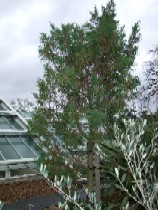 |
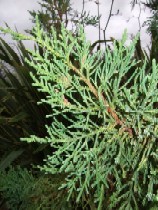 |
Find out more about Kew's activities and partner organisations in Bermuda: |

